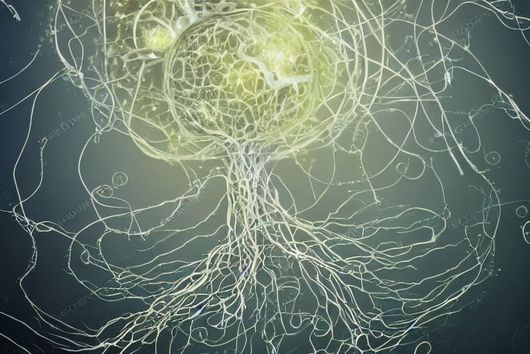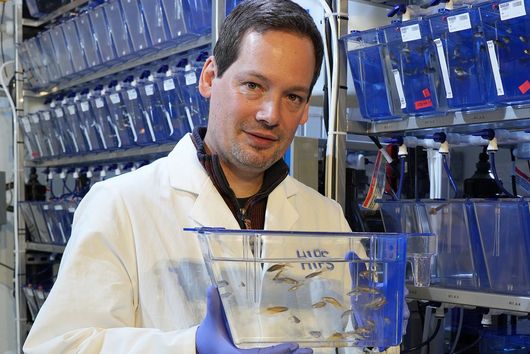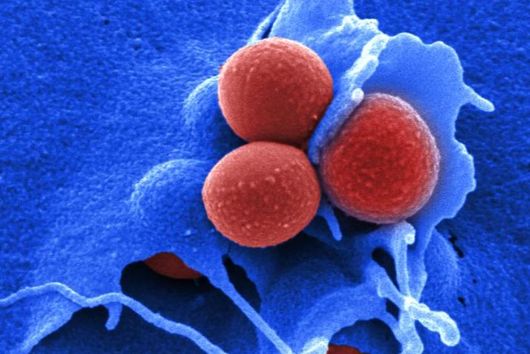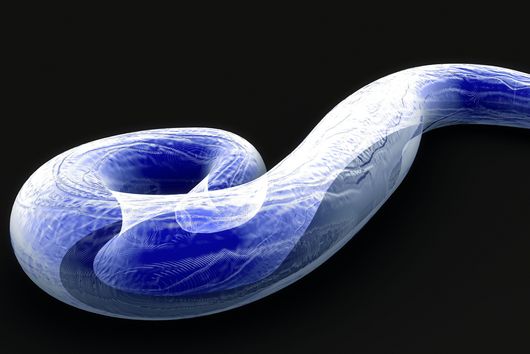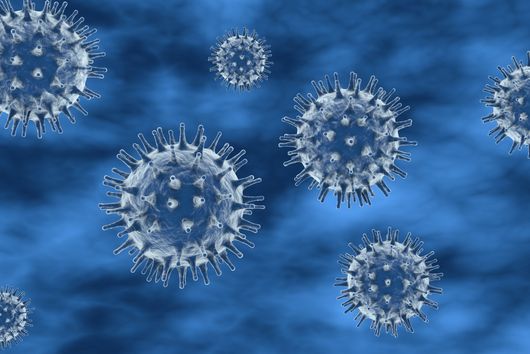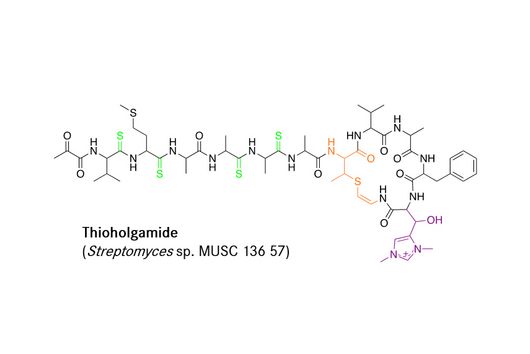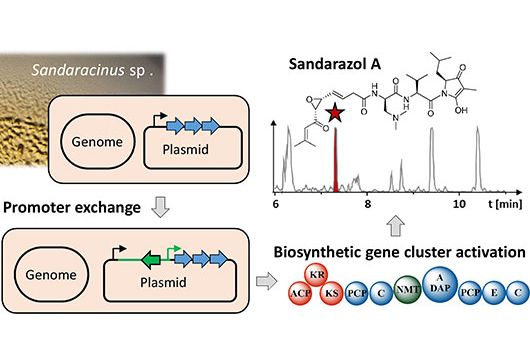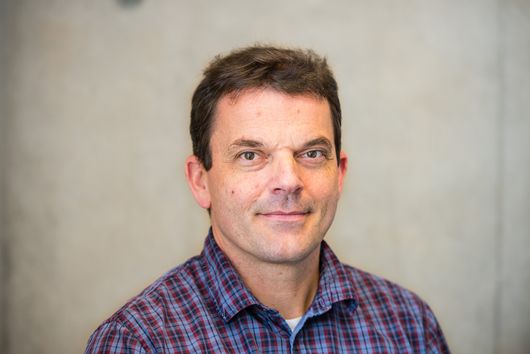Saarbrücken, 29 November 2019 - The Scientific Director of the Helmholtz Centre for Infection Research (HZI), Prof Dirk Heinz, the President of Saarland University, Prof Manfred Schmitt, the Managing Director of the Helmholtz Institute for Pharmaceutical Research Saarland (HIPS, a site of HZI), Prof Rolf Müller, and the Scientific Director of the Leibniz Institute for New Materials (INM), Prof Aránzazu del Campo, signed the collaboration agreement to launch the Pharmaceutical Research Alliance Saarland today.
The signing of this agreement starts a pilot research alliance between the two major research organisations, the Helmholtz Association and the Leibniz Association, and Saarland University. The aim of the new alliance is to pool the interests of the partner organisations – the Helmholtz Centre for Infection Research (HZI) and its HIPS site in Saarbrücken, Saarland University (UdS), and the Leibniz Institute for New Materials (INM) – in research, teaching and supporting junior researchers for the next five years, and to make use of the resulting synergies. The alliance will be financed through a cooperation fund of 3.3 million euros, which was provided by the partners.
The alliance partners will implement joint research projects, as well as the joint appointments of professors, start-up financing for third-party funded projects, and other strategic measures to strengthen pharmaceutical research. Joint research projects will be conducted in the form of bi- or trilateral projects involving scientists from the HZI/HIPS, the INM and Saarland University, with the participation of the Faculty of Medicine, the Faculty of Mathematics and Computer Science, the Faculty of Natural Sciences and Technology and the Center for Bioinformatics.
Prof Dirk Heinz, Scientific Director of the HZI, sees the new collaboration as an important milestone in overcoming current challenges in infection medicine. “The HZI considers it an integral part of its mission to transfer findings from basic research into medical applications as quickly as possible. This is where an interdisciplinary consolidation of the drug development expertise of the HZI/HIPS, and Saarland University with the specialised biomedical materials of the INM can help to bring patient-specific approaches to drug development more rapidly into application.”
The area of nano- and life sciences is already one of the top research fields in Saarland. The goal of the new interdisciplinary collaboration of the partner university and the HZI/HIPS in biomedical-pharmaceutical drug research is to integrate this field even more closely with clinical medicine, bioinformatics and biologically inspired materials research, and, among other things, to provide targeted support for joint research projects in the field of therapeutic modelling and modulation of cellular signals in infections. In particular, the close, long-standing scientific links of both partners with the INM will be strengthened by a collaboration in the area of biomaterials and therapeutic devices.
Prof Manfred Schmitt, President of Saarland University, emphasised: “Thanks to the highly successful scientific interaction between the HZI/HIPS and the university, in particular between the life science areas of the Faculty of Natural Sciences and Technology, clinical and preclinical medicine and the inter-faculty and multi-location Center for Bioinformatics, the pioneering drug research is excellently positioned at the interface of pharmacy, biomedicine, bioinformatics and biomaterials and has now become an example for others to follow. The research alliance that has been formed will enable us in the coming years to strengthen research, teaching and transfer in this top research area in a targeted and significant manner, and to develop this unique alliance of university and non-university partner institutions into a nationally and internationally leading location with great impact.”
Prof Rolf Müller, Managing Director at the Helmholtz Institute for Pharmaceutical Research Saarland (HIPS) in Saarbrücken, particularly highlighted multi-resistant bacteria as a major current threat: “Pathogens repeatedly find ways to circumvent existing therapies and thus become resistant to drugs that were effective for years before. One major part of the problem is that the development of new effective antibiotics has been stagnating for the past decades. We strongly believe that a joint focus on drug research at Saarland University together with our experienced partners in the fields of medicine and computer science and the INM, is the right way to address this problem efficiently. The research alliance between the HIPS, UdS and INM combines the disciplines of pharmacy, medicine, computer science and materials science, and thus enables the participating scientists to develop innovative research approaches to fighting resistant pathogens.” The international researchers at the HZI and HIPS are working hard to find innovative agents against infectious diseases, optimise these agents for application in humans and research the ways in which these agents can be best transported through the body to the site of action.
Prof Aránzazu del Campo, Scientific Director at the INM, underlined the importance of collaboration: “Biomaterials are essential for controlled release of active substances. The current approaches to drug release are insufficient for new, natural substance-based therapeutics. These molecules are particularly sensitive and expensive, and entirely new material developments are required to create effective and affordable therapies for all patients. Only collaboration between disciplines and institutions – our alliance of the HIPS, UdS and the INM is an excellent example of this – can overcome such a challenge.”
On the occasion of the collaboration agreement, Saarland’s Prime Minister of Saarland, Tobias Hans, who is also responsible for the Department of Higher Education, Science and Technology in the Saarland State Chancellery, emphasised: “The signing of the Pharmaceutical Research Alliance and thus the establishment of the cooperation of the Helmholtz Institute for Pharmaceutical Research Saarland, the Leibniz Institute for New Materials and Saarland University creates a sustainable framework for interdisciplinary and cross-institutional collaboration. The joint activities of the three partners in research, teaching and supporting young researchers will be bundled to create an alliance that is more than the sum of the individual top research institutions. This is an important step towards intensifying the focus on NanoBioMed and its future-oriented development.”
The signing of the agreement also represented a possibility for participants to discuss definite future development opportunities for the HZI/HIPS and Saarland University with the involvement of the INM in the area of pharmaceutical drug research.
About the HIPS, an HZI site
The Helmholtz Institute for Pharmaceutical Research Saarland (HIPS) is a branch of the Helmholtz Centre for Infection Research (HZI) in Braunschweig and was established by the HZI and Saarland University in August 2009. Its researchers are searching mainly for new agents against infectious diseases, aiming to optimise these agents for application in humans and research the ways in which these agents can be best transported through the body to the site of action. The HIPS is part of the Hannover-Braunschweig site of the German Center for Infection Research (DZIF). www.helmholtz-hips.de
About the HZI
Scientists at the Helmholtz Centre for Infection Research (HZI), based in Braunschweig and other sites in Germany, research bacterial and viral infections as well as the body’s defence mechanisms. They have profound expertise in the field of natural product research and its use as a valuable source of novel anti-infectives. As a member of the Helmholtz Association and the German Center for Infection Research (DZIF), the HZI conducts translational research to lay the groundwork for the development of effective treatments and vaccines against infectious diseases. www.helmholtz-hzi.de
About Saarland University
Saarland University was founded in 1948 as a bilingual university under the patronage of France. It is renowned internationally for its research in computer science and the nano- and life sciences. The close relationships to France and the focus on Europe are further trademarks. The university has an international character unlike virtually any other medium-sized German university. Many disciplines at Saarland University are closely linked in research and teaching. The scientists at the university also work intensively with researchers from nearby non-university research institutes, as well as universities around the world. Of particular benefit is the fact that all the major science organisations are represented either on campus or nearby, including two Max Planck institutes, two Leibniz and two Fraunhofer institutes, a Helmholtz centre and a Helmholtz institute.
About the INM
New materials are the driving force for new technologies. The INM combines the two worlds of multidisciplinary scientific research and material-oriented technology transfer under one roof. Chemistry, physics, biology, materials science and engineering all interact in close collaboration. An essential focus of the INM’s research work is the transfer of biological principles to the design of new materials, structures and surfaces. The INM is an institute of the Leibniz Association. It is connected with numerous research organisations and technology companies worldwide. It is also closely linked to Saarland University through seven joint professorships. www.leibniz-inm.de










